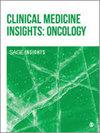外周凝血参数与前列腺癌的关系:一项回顾性研究和孟德尔随机法
IF 1.9
4区 医学
Q3 ONCOLOGY
引用次数: 0
摘要
背景:由于前列腺特异性抗原(PSA)在诊断前列腺癌(PCa)方面存在局限性,因此有必要探索新型生物标记物。最近的研究表明,凝血标志物(尤其是纤维蛋白原和D-二聚体)与PCa之间存在潜在联系。方法:研究人员对466名接受活检的患者进行了回顾性单中心分析,将其分为PCa组和良性前列腺增生(BPH)组。分析了基线和凝血参数水平。结果发现:与良性前列腺增生症患者相比,PCa 患者的 D-二聚体水平(P < .001)、总 PSA(P < .001)和 PSA 密度(P < .001)均显著高于良性前列腺增生症患者。纤维蛋白原水平无明显差异 ( P = .505)。磁共振分析表明,D-二聚体水平升高与 PCa 风险增加之间可能存在因果关系(几率比:1.81,95% 置信区间:1.48-2.21,P = 7.4 × 10-9)。这项研究为今后开展大规模、多中心研究以证实这些发现并进一步探索凝血标志物与 PCa 机制之间的关系铺平了道路。本文章由计算机程序翻译,如有差异,请以英文原文为准。
Peripheral Coagulation Parameters and Prostate Cancer Association: A Retrospective Study and Mendelian Randomization
Background:The limitations of prostate-specific antigen (PSA) in diagnosing prostate cancer (PCa) necessitate the exploration of novel biomarkers. Recent studies suggest a potential link between coagulation markers, particularly fibrinogen and D-dimer, and PCa.Methods:A retrospective single-center analysis on 466 biopsy-undergone patients was conducted, categorized into PCa and benign prostatic hyperplasia (BPH) groups. Baseline and coagulation parameter levels were analyzed. Utilizing a Mendelian randomization (MR) approach, we investigated the causative relationship between D-dimer and PCa risk.Results:Individuals with PCa, compared with those with BPH, exhibited significantly higher D-dimer levels ( P < .001), total PSA ( P < .001), and PSA density ( P < .001). Fibrinogen levels did not exhibit significant differences ( P = .505). The MR analysis suggested a probable causal link between elevated D-dimer levels and an increased risk of PCa (odds ratio: 1.81, 95% confidence interval: 1.48-2.21, P = 7.4 × 10−9 ).Conclusions:This research highlights D-dimer as a potential biomarker for diagnosing PCa, supported by clinical and MR analyses. The study paves the way for future large-scale, multi-center research to corroborate these findings and further explore the relationship between coagulation markers and PCa mechanisms.
求助全文
通过发布文献求助,成功后即可免费获取论文全文。
去求助
来源期刊

Clinical Medicine Insights-Oncology
Medicine-Oncology
CiteScore
2.40
自引率
4.50%
发文量
57
审稿时长
8 weeks
期刊介绍:
Clinical Medicine Insights: Oncology is an international, peer-reviewed, open access journal that focuses on all aspects of cancer research and treatment, in addition to related genetic, pathophysiological and epidemiological topics. Of particular but not exclusive importance are molecular biology, clinical interventions, controlled trials, therapeutics, pharmacology and drug delivery, and techniques of cancer surgery. The journal welcomes unsolicited article proposals.
 求助内容:
求助内容: 应助结果提醒方式:
应助结果提醒方式:


